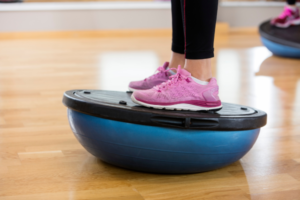Exercise to a Healthy Heart
Exercise Decreases Heart Disease
According to the American Heart association, in the United States, 250,000 deaths per year are a result from a lack of exercise. Although by exercising regularly, you can work your way to a healthy heart.
Exercise decreases heart disease by improving the muscles’ ability to extract oxygen from blood, reducing the heart’s need to work overtime to supply oxygen to the muscles. Exercise is also know to reduce cortisol and other stress hormones which can place a burden on the heart and increase the risk for developing heart disease. Additionally, exercise helps increase healthy (HDL) cholesterol levels and controls fat levels found in the blood (triglycerides).
Types of Exercise
Endurance




Cardiovascular endurance exercises involve moving your body at a moderate to high intensity for an extended period of time. Cardiovascular endurance exercises include walking, running, hiking, stair climbing, and dancing. Regularly practicing endurance allows your body to move blood more efficiently and provide adequate oxygen to your cells.
Strength




Strength training activities include bodyweight resistance activities (e.g., pushups and situps) and exercises with resistance bands, weight machines, and hand-held weights. While strength training can help increase muscle mass and strength, it can also improve heart health by burning extra calories, which helps maintain blood sugar and regulate cholesterol levels.
Balance




Exercises to improve balance include various yoga poses, including mountain pose, chair pose, eagle pose, downward-facing dog, plank poses, etc., and leg raises, squats, and toe/heel raises. Balance can also be improved by participating in sports such as gymnastics, bowling, skating, golf, and more. Balance exercises improve heart health by reducing physical and mental stress (which is detrimental to the heart).
Flexibility




Exercises that can help improve your flexibility include yoga poses (cat/cow, downward facing dog, child’s pose, bridge pose, needle posing dog, etc.) and hamstring stretches, lunges, spinal twists, butterfly stretches, and more. Sports, including gymnastics, diving, dance, martial arts, etc., can also improve flexibility. Actively practicing flexibility can improve blood flow, lower blood pressure, and decrease stiff arteries, reducing your risk for heart disease.
